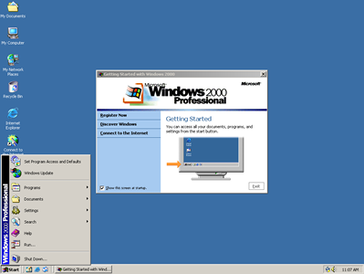Microsoft Windows 2000 Professional review: Microsoft Windows 2000 Professional

Introduction
Microsoft Windows 2000 Professional was a significant milestone in the evolution of Microsoft’s operating systems. Released on February 17, 2000, it aimed to provide increased reliability, better performance, and enhanced security compared to its predecessors. In this article, we will review the strengths and weaknesses of Windows 2000 Professional and highlight its impact on the world of computing.
Improved Reliability
One of the most important aspects of any operating system is its ability to run consistently without crashing or experiencing errors. Compared to previous versions such as Windows 95 and Windows 98, Windows 2000 Professional offered significant improvements in stability. The new operating system was built on the stable Windows NT kernel, providing a solid foundation for both business and personal use.
Enhanced Performance
Windows 2000 Professional introduced several performance improvements that made it stand out amidst competing operating systems. Notably, it included features such as Active Directory support and improved Plug-and-Play capabilities. As a result, users experienced less downtime due to device or software compatibility issues, while overall system performance saw noticeable enhancements.
Advanced Security Features
Security has always been a crucial aspect in any computing environment, and Windows 2000 Professional did not disappoint in this regard. With support for encryption technologies such as virtual private networking (VPN) and the Encrypting File System (EFS), users had access to greater data protection options right out of the box. Additionally, features like Group Policy and Kerberos Authentication empowered IT administrators to manage user permissions and authentication more effectively.
Room for Improvement
Despite its many strengths, there were also areas where Windows 2000 Professional fell short when compared to subsequent releases. Its hardware requirements were notably higher than earlier iterations; hence older machines may have struggled with the transition. Additionally, as with any new operating system release, early adopters faced challenges with software and driver compatibility.
Legacy
In retrospect, Windows 2000 Professional was a significant step forward in the progression of Microsoft’s operating systems. Its focus on stability, performance, and security paved the way for future operating system versions like Windows XP and Windows Vista. While it did have its limitations at the time, Windows 2000 Professional will be remembered for its crucial role as a building block for the Windows operating systems we know today.






